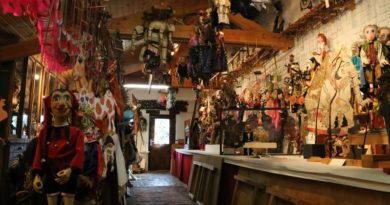Discover the flint Museum in Eben-Emael
Between 1951 and 1965, an impressive yet sombre 33m-high square structure was constructed out of flint on the crest of a hill in the Jeker valley in Eben-Emael, a borough of Bassenge. It drew the attention of anyone who passed by.
Robert Garcet (1912-2001), from the Mons area of Hainaut, began his apprenticeship in stonemasonry in Eben-Emael in 1930. He became a full-time stonemason and worked his way up to become proprietor of the stone quarry. He also dug up fossils. His fascination with the origins of mankind and his observations of the things he dug up caused him to develop new theories about humanity’s roots. Many, however, considered him a joker. Furthermore, Robert was an amateur palaeontologist and a self-declared pacifist and anarchist.
He bought a part of an old flint quarry from his employer in 1950. This was when his plan for his life’s work, taking account of the Bible and his own philosophy founded upon pacifism, took on a more concrete form. All the dimensions and ratios in his universe of fantasy and harmony are derived from his personal theory of numbers, based on the Bible. The artist chose the name Eben-Ezer because this is the place in the Bible where the prophet Samuel erected a stone as a symbol of rediscovered peace around 1000 BC. Each concrete statue on the four corner towers represents one of the cherubs who foreshadow the Apocalypse: the Bull, the Human as a Sphinx, the Lion and the Eagle.



